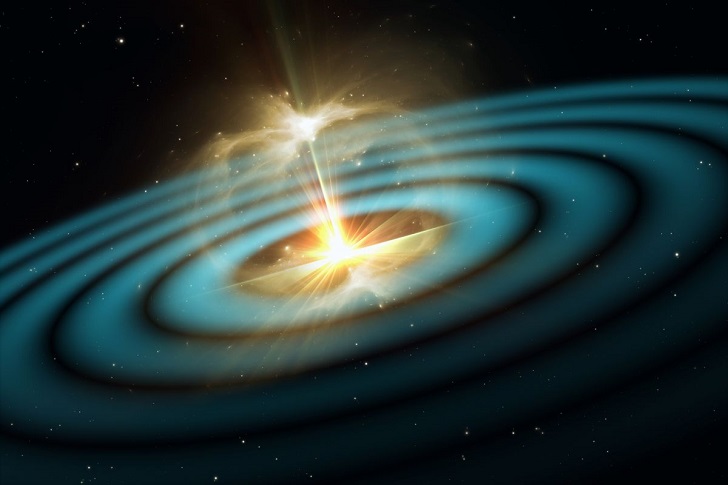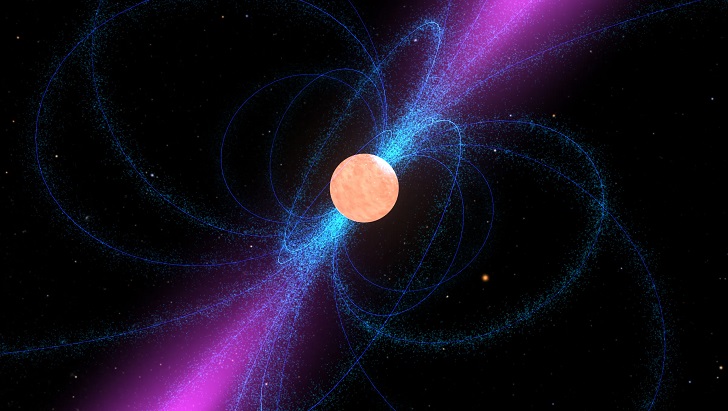The cosmos, with its vast expanse, holds countless enigmas that continue to captivate and challenge the human mind. As we delve deeper into cosmic wonders, we gain insights into our origins and our position in the Universe.
Recently, astronomers have achieved a remarkable feat in astrophysics by detecting low-frequency gravitational waves, shedding new light on the mysteries of the cosmos. Below, we will delve into the intriguing world of low-frequency gravitational waves, detailing their nature, discovery, and the profound implications they hold.

Daniëlle Futselaar/ artsource.nl/ Max-Planck-Institut für Radioastronomie | NANOGrav is a collaboration of US and Canadian astrophysicists and a National Science Foundation Physics Frontiers Center in 1916
Unraveling the Nature of Low-Frequency Gravitational Waves:
To comprehend the significance of the discovery, we must first understand what low-frequency gravitational waves are. Gravitational waves are ripples in the fabric of spacetime generated by massive objects undergoing changes in speed or direction.
When these waves have a frequency so low that conventional detection methods fail to capture them, they are categorized as low-frequency gravitational waves. Remarkably, their wavelengths can span billions of light-years, making them a crucial component of the cosmic symphony.
The Trailblazing Discovery:
The breakthrough discovery of low-frequency gravitational waves was achieved through the collaborative efforts of various radio telescopes dispersed worldwide. Focusing their attention on pulsars, remnants of dead stars emitting periodic radio waves, scientists conducted meticulous observations over more than two decades.
By scrutinizing the pulsar signals, researchers were able to discern minuscule fluctuations in their arrival times—a telltale sign of the elusive gravitational waves distorting the fabric of space-time.

Shutterstock/ Livescience | Astronomers have made a discovery that confirms the existence of gravitational waves
Unfolding the Implications:
The detection of low-frequency gravitational waves bears momentous implications for our understanding of the Universe. Foremost among these is the belief that these waves originate from the merging of supermassive black holes at the centers of galaxies.
Unraveling this phenomenon can significantly enhance our comprehension of cosmic inflation, dark matter's nature, and the intricate processes governing black hole and galaxy formation and evolution. In essence, studying the properties and behaviors of these waves serves as a key to unlocking the secrets of the Universe, drawing us ever closer to unraveling its mysteries.
A New Era of Scientific Exploration:
The discovery of low-frequency gravitational waves heralds a new era of scientific exploration, promising exciting revelations and transformative insights. After decades of research and development, astronomers now find themselves on the cusp of exploring uncharted territories of the cosmos.
As we gain more knowledge about the Universe's evolution, we can fathom our own place in the grand tapestry of existence. This pioneering discovery ignites the flames of curiosity, driving us to continue our cosmic observations and daring us to venture even further into the depths of space.

NASA/ USAToday | Most likely, the gravitational waves come from pairs of supermassive black holes that are spiraling around each other inside merging galaxies
Conclusion
In conclusion, the detection of low-frequency gravitational waves represents a monumental leap forward in the realm of astrophysics. This achievement, born from years of dedication and collaboration, ushers in a new era of scientific exploration and curiosity.
As we unravel the mysteries of the Universe and delve deeper into the cosmic wonders, we come to understand our own place within this vast expanse. The future of space exploration is teeming with possibilities, and with each discovery, we inch closer to comprehending the incomprehensible.
So, let us continue to gaze into the boundless depths of the Universe, for within its enigmatic realms, boundless discoveries await our inquisitive minds.